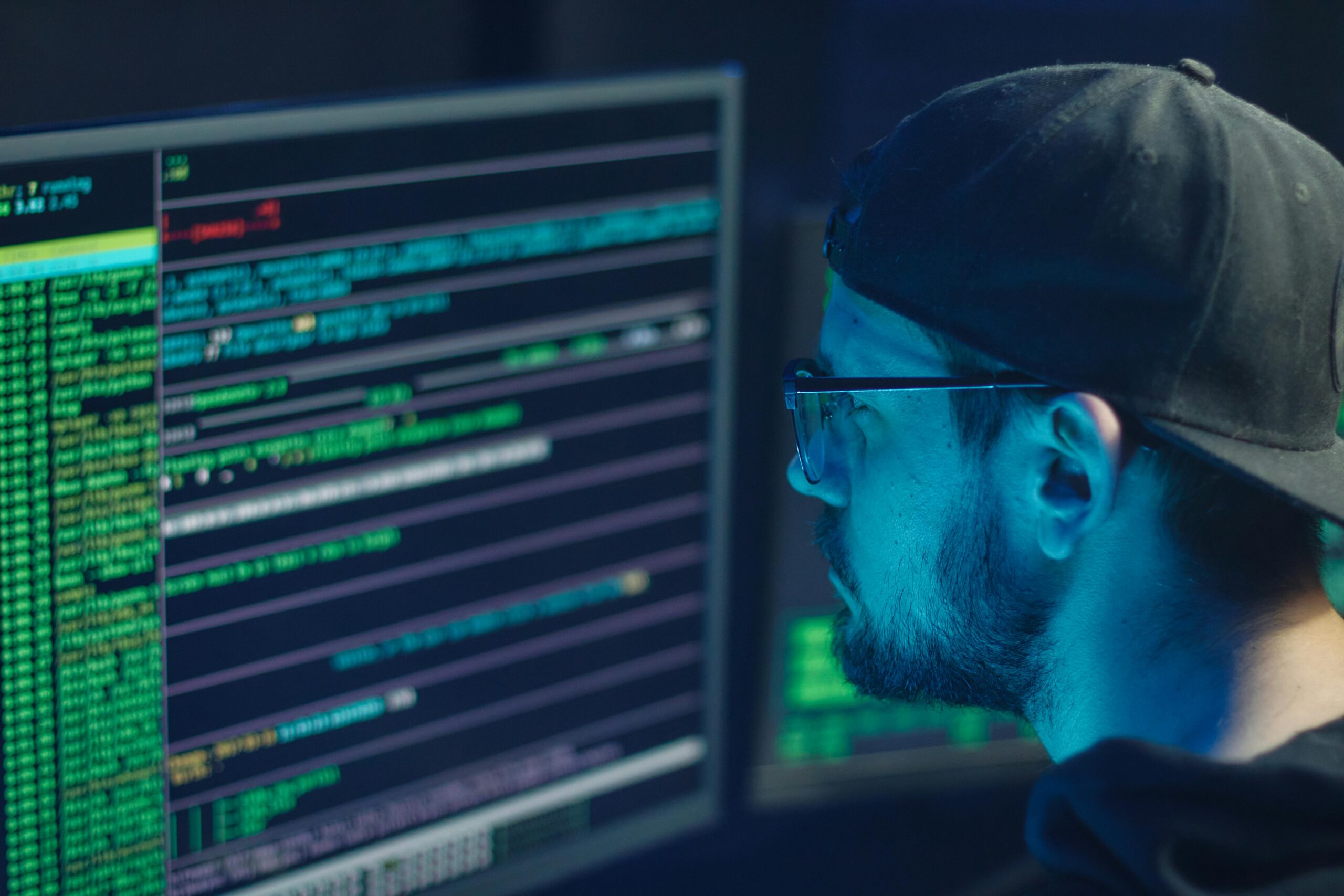Remote work has transformed how we operate, but it also brings serious risks. Protecting your digital workspace is no longer optional—it’s essential for survival.
🔐 Why Virtual Work Environments Are Prime Targets
The shift to remote work has created unprecedented opportunities for cybercriminals. With employees accessing sensitive company data from home networks, coffee shops, and co-working spaces, the attack surface has expanded exponentially. Traditional office security perimeters no longer exist, making every connection point a potential vulnerability.
Hackers specifically target remote workers because they often lack the robust security infrastructure of corporate offices. Home routers frequently run on default passwords, personal devices may not have enterprise-grade protection, and video conferencing tools can become gateways for data breaches. Understanding these vulnerabilities is the first step toward building a fortress around your virtual workspace.
Recent statistics paint a sobering picture: remote workers are three times more likely to experience security incidents compared to their office-based counterparts. Data breaches cost companies an average of $4.24 million per incident, with remote work factors increasing this cost by nearly 15%. The financial and reputational damage extends far beyond immediate losses.
Building Your Digital Defense Foundation
Creating a secure virtual work environment starts with understanding the fundamental layers of protection. Think of security as a multi-tiered system where each component reinforces the others, creating redundancy that catches threats others might miss.
Network Security Essentials
Your network connection serves as the gateway between your device and the digital world. Securing this pathway requires immediate attention. Start by changing your router’s default administrator credentials—these factory settings are publicly available and represent the easiest entry point for attackers.
Enable WPA3 encryption on your wireless network, or at minimum WPA2 if your equipment doesn’t support the latest standard. This encryption scrambles data transmitted between your device and router, making intercepted communications useless to eavesdroppers. Additionally, create a separate guest network for visitors and smart home devices, isolating them from computers containing sensitive work information.
Virtual Private Networks (VPNs) add another critical layer by encrypting all internet traffic between your device and the VPN server. This technology proves especially valuable when using public Wi-Fi networks, which broadcast unencrypted data that anyone with basic tools can intercept. Quality VPN services route your connection through secure servers, masking your IP address and location while preventing network administrators from monitoring your activities.
Endpoint Protection That Actually Works
Every device accessing your work environment represents a potential entry point. Comprehensive endpoint protection goes beyond basic antivirus software to include behavioral analysis, threat detection, and automated response capabilities.
Modern endpoint security solutions use artificial intelligence to identify suspicious patterns that traditional signature-based antivirus programs miss. These systems monitor file modifications, network connections, and system processes in real-time, blocking threats before they can establish a foothold. Regular updates ensure protection against the latest exploit techniques and malware variants.
Mobile devices require equal attention, as smartphones and tablets increasingly handle sensitive business communications and data access. Implement mobile device management (MDM) solutions that enforce security policies, enable remote wiping capabilities, and maintain separation between personal and professional data through containerization.
🔑 Authentication Strategies That Stop Intruders Cold
Passwords alone no longer provide adequate security in today’s threat landscape. Implementing multi-layered authentication dramatically reduces unauthorized access risks, even when credentials become compromised.
Multi-Factor Authentication Implementation
Multi-factor authentication (MFA) requires users to provide multiple verification forms before granting access. This approach combines something you know (password), something you have (smartphone or security key), and potentially something you are (biometric data) to create a formidable barrier against intrusion.
Time-based one-time passwords (TOTP) generated by authenticator apps provide strong second-factor protection without relying on SMS messages, which can be intercepted through SIM swapping attacks. Hardware security keys offer even greater protection by requiring physical device presence for authentication, making remote attacks nearly impossible.
For organizations, implementing conditional access policies adds intelligence to authentication requirements. These systems analyze context like location, device health, and user behavior patterns, requiring additional verification when suspicious conditions arise while streamlining access for routine activities from trusted devices.
Password Management Best Practices
Despite authentication advances, passwords remain fundamental to security. However, human memory limitations make it impossible to maintain unique, complex passwords across dozens of accounts without assistance. Password managers solve this dilemma by securely storing credentials in encrypted vaults, requiring only a single master password to access everything.
Quality password managers generate cryptographically random passwords with sufficient length and complexity to resist brute-force attacks. They automatically fill credentials on legitimate websites while refusing to populate them on phishing sites that mimic authentic pages, providing built-in phishing protection. Cross-device synchronization ensures access from any location while maintaining encryption that even the service provider cannot break.
📧 Email Security and Phishing Prevention
Email remains the primary vector for cyberattacks, with phishing campaigns growing increasingly sophisticated. Protecting your inbox requires both technological solutions and human vigilance.
Advanced email filtering solutions use machine learning to identify phishing attempts, malicious attachments, and impersonation attacks. These systems analyze sender reputation, message content, embedded links, and attachment characteristics to quarantine suspicious messages before they reach your inbox. Implementing DMARC, DKIM, and SPF protocols validates sender authenticity, preventing domain spoofing attacks that make malicious emails appear legitimate.
Training yourself and your team to recognize phishing indicators proves equally important. Hover over links to reveal actual destinations before clicking, scrutinize sender addresses for subtle misspellings, and question urgent requests for sensitive information or financial transactions. When in doubt, contact the purported sender through independently verified channels rather than replying to suspicious messages.
Attachment handling requires particular caution. Enable file extension viewing to identify executables disguised as documents, and never enable macros in Office documents from unknown sources. Cloud-based sandboxing services can safely detonate suspicious attachments in isolated environments, revealing malicious behavior without risking your actual system.
🛡️ Data Protection and Encryption Methods
Protecting data at rest and in transit ensures that even successful breaches don’t result in usable information falling into unauthorized hands. Comprehensive encryption strategies address multiple scenarios where data might become exposed.
Full Disk Encryption
Encrypting entire storage devices protects against physical theft and unauthorized access scenarios. Modern operating systems include built-in encryption capabilities—BitLocker for Windows, FileVault for macOS, and LUKS for Linux—that transparently encrypt and decrypt data as programs access it. Performance impact has become negligible on modern hardware with AES-NI acceleration.
Encryption proves particularly critical for laptops and mobile devices that leave secure locations. A stolen encrypted device becomes worthless to thieves without the decryption key, protecting both organizational data and personal information from exposure. Backup encryption keys to secure locations separate from the encrypted devices themselves, ensuring recovery capability if primary keys become lost.
Communication Encryption
End-to-end encryption protects messages and files during transmission, preventing interception by network administrators, internet service providers, or attackers monitoring network traffic. Applications implementing true end-to-end encryption generate encryption keys on user devices rather than servers, ensuring even service providers cannot access message content.
For sensitive communications, prioritize platforms with proven encryption implementations and independent security audits. Signal protocol has become the gold standard for messaging security, adopted by numerous applications beyond Signal itself. For video conferencing, verify that platforms encrypt meetings end-to-end rather than just encrypting connections to central servers.
Backup Strategies That Survive Ransomware
Ransomware attacks have evolved from nuisances to existential threats, with attackers encrypting critical data and demanding payment for restoration. Proper backup strategies ensure business continuity even when primary systems become compromised.
The 3-2-1 backup rule provides a framework: maintain three copies of data, store them on two different media types, and keep one copy offsite. This approach protects against hardware failure, physical disasters, and localized attacks. Cloud backups serve as excellent offsite copies, while local backups enable faster restoration for minor incidents.
Immutable backups prevent ransomware from encrypting backup files along with primary data. These write-once storage solutions or versioning systems maintain previous file versions that cannot be modified or deleted for specified retention periods. Air-gapped backups—periodically connected external drives stored offline—provide ultimate protection against network-based attacks.
Regular restoration testing verifies that backups actually work when needed. Many organizations discover backup failures only during crisis recovery attempts. Schedule quarterly restoration drills using backup data, documenting procedures and measuring recovery time objectives to identify improvement opportunities.
🔍 Monitoring and Incident Response
Early threat detection significantly reduces damage from successful attacks. Implementing monitoring systems and incident response procedures transforms security from purely preventive to adaptive and resilient.
Security Information and Event Management
SIEM systems aggregate logs from multiple sources—firewalls, servers, applications, and endpoints—analyzing them for suspicious patterns indicating potential security incidents. Correlation rules identify attack sequences that individual events might not reveal, such as failed login attempts followed by successful access from unusual locations.
Cloud-based SIEM solutions have made enterprise-grade monitoring accessible to smaller organizations without significant infrastructure investments. These platforms use machine learning to establish baseline behavior patterns, alerting administrators to anomalies that might indicate compromised accounts or insider threats.
Incident Response Planning
Despite best prevention efforts, breaches occasionally occur. Documented incident response procedures minimize confusion and damage when time-critical decisions arise. Response plans should identify team roles, communication protocols, containment procedures, and recovery steps for various incident scenarios.
Isolation capabilities prove critical during active incidents. Network segmentation allows compromised systems to be quarantined without disrupting entire operations. Practice incident response through tabletop exercises that simulate various attack scenarios, revealing process gaps and coordination issues before actual emergencies arise.
Compliance and Regulatory Considerations
Data security increasingly intersects with legal obligations as privacy regulations multiply globally. Understanding applicable requirements ensures that security measures meet minimum standards while avoiding penalties for non-compliance.
GDPR, CCPA, HIPAA, and industry-specific regulations impose varying requirements for data protection, breach notification, and user rights. Compliance frameworks provide structured approaches to meeting these obligations while improving overall security posture. Regular audits verify continued adherence and identify emerging gaps as regulations evolve.
Documentation proves essential for demonstrating compliance efforts. Maintain records of security policies, training completion, access logs, and incident responses. These records not only satisfy regulatory requirements but also inform continuous improvement efforts by revealing patterns and recurring issues.
🎓 Security Awareness and Training
Technology alone cannot secure virtual work environments—human behavior remains the ultimate vulnerability or strongest defense. Comprehensive security awareness programs transform employees from potential weaknesses into active security participants.
Effective training goes beyond annual presentations to incorporate regular micro-lessons reinforcing key concepts. Phishing simulations test real-world preparedness while identifying individuals requiring additional support. Positive reinforcement for correct security behaviors proves more effective than punitive approaches that encourage hiding mistakes rather than reporting them promptly.
Create security champions within teams who receive advanced training and serve as first-line resources for colleagues. This distributed expertise model provides immediate assistance for security questions while reducing bottlenecks at centralized IT teams. Recognition programs highlighting security-conscious behavior foster cultural change where protection becomes everyone’s responsibility.
Future-Proofing Your Security Posture
The threat landscape continually evolves as attackers develop new techniques and technologies emerge with fresh vulnerabilities. Building adaptable security programs ensures long-term protection despite inevitable changes.
Stay informed about emerging threats through security newsletters, threat intelligence feeds, and professional communities. Understanding new attack vectors before they become widespread enables proactive defense rather than reactive scrambling after incidents occur. Participate in information sharing initiatives that provide early warning about threats targeting your industry sector.
Adopt zero-trust security models that assume breach and verify every access request regardless of origin. This approach eliminates implicit trust based on network location, requiring authentication and authorization for every resource access. While implementation requires significant effort, zero-trust architectures provide superior protection for distributed workforces operating across untrusted networks.
Regular security assessments through penetration testing and vulnerability scanning reveal weaknesses before attackers exploit them. External security professionals provide objective perspectives unconstrained by organizational assumptions, discovering issues internal teams might overlook. Schedule assessments at least annually, with additional testing after significant infrastructure changes.
💼 Balancing Security with Productivity
Security measures that significantly impede work face resistance and circumvention attempts. Effective programs balance protection with usability, implementing strong security through transparent processes that minimally disrupt productive work.
Single sign-on (SSO) solutions reduce password fatigue by authenticating users once for access to multiple applications. This convenience actually improves security by enabling stronger authentication requirements and reducing password reuse across services. Contextual authentication adjusts requirements based on risk level, applying strict controls to sensitive operations while streamlining routine tasks.
Involve users in security decision-making to understand workflow impacts and identify solutions that meet both security and productivity objectives. Solutions imposed without consultation often create friction that reduces both efficiency and security as frustrated users seek workarounds. Collaborative approaches generate buy-in and practical solutions accounting for real-world usage patterns.

Creating Your Action Plan
Implementing comprehensive security improvements can feel overwhelming, but systematic approaches make progress manageable. Prioritize measures based on risk assessment, addressing highest-impact vulnerabilities first while building toward comprehensive protection.
Start with quick wins requiring minimal investment but providing immediate security improvements: enable MFA on all accounts supporting it, install updates across all devices, and implement password managers. These foundational steps significantly reduce risk while requiring relatively little time or expense.
Develop a phased roadmap addressing medium and long-term improvements. Network segmentation, SIEM implementation, and zero-trust architecture require substantial planning and execution but provide transformative security enhancements. Breaking large initiatives into smaller milestones maintains momentum and demonstrates progress.
Securing virtual work environments demands ongoing commitment rather than one-time projects. Regular reviews ensure security measures remain effective against evolving threats while adapting to organizational changes. By building security into your digital work culture rather than treating it as a separate concern, you create resilient operations capable of thriving despite persistent threats. The investment in comprehensive data security protects not just information but organizational reputation, customer trust, and competitive advantage in an increasingly digital world.
Toni Santos is a future-of-work researcher and social innovation writer exploring how technology, culture, and global mobility are redefining what it means to work and thrive in the 21st century. Through his studies on automation, digital nomadism, and workforce transformation, Toni examines the balance between progress, adaptability, and human purpose in a rapidly changing world. Passionate about remote collaboration systems and digital inclusion, Toni focuses on how emerging tools and global connectivity empower individuals to build meaningful, flexible, and resilient careers. His work highlights how automation and new work models can coexist with creativity, empathy, and social value. Blending sociology, economics, and digital strategy, Toni writes about the human side of innovation — helping readers understand not only where work is heading, but how to align with its transformation responsibly and purposefully. His work is a tribute to: The evolving relationship between automation and human employment The rise of global, location-independent lifestyles The power of resilience and adaptability in the modern workforce Whether you are a freelancer, remote leader, or curious observer of the new economy, Toni Santos invites you to explore the future of work — one idea, one connection, one transformation at a time.




